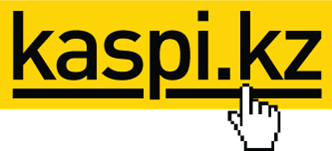Educational program
Computer Aided Design

Graduates of this educational path can develop on the basis of new information technologies and programming intelligent software systems aided design in electronics and computing, computer appliance workflow automation and production, including economics, medicine, education and other areas, provide administration and maintenance of computer equipment of any complexity and computer networks at various levels.
After completion of study of disciplines of the educational program "Computer-aided Designs" students must:
To know and understand:
- methods and to develop the algorithms of decision of tasks of management and planning of objects of automation;
- bases of informative safety, methods of the defence of information from an unauthorized division, damage or intentional distortion;
- general design technique of local area networks;
- programmatic facilities for creation of databases;
be able:
- apply modern technologies of development of programmatic complexes with the use of CASE- of facilities, to control quality of the developed software products;
- automatize business processes;
own:
- by technology of defence of information;
- by technology of planning of structure of web- web-site as an informative system;
- by technology of creation, optimization, placing on the server of web- web-site;
- by technology of creation of the distributed databases.
Catalogue of disciplines of the educational program
The catalogue of disciplines of the educational program contains description of every discipline individually with pointing of prerequisites and postrequisites, amount of credits, types of employments, information about the heads of the program.
Basic disciplines
Нейрокомпьютерлер / Нейрокомпьютеры / Neurocomputers – 2 credits
Prerequisites: Software development technology
Brief content of the course: Subject of the discipline , its structure and content. Problems solved on neurocomputers . Circuit of abstract neurocomputer . Neurocomputer structure . Neurocomputer components . Neurocomputer comparison with von Neumann machine . Model of formal neurons . Kinds of activation functions . Classification of neural networks. Classification by type of neural network topology. Classification of neural networks method for solving the problem . Mathematical description of the multilayer neural networks. Technique for solving problems in the neural network basis. Evaluation of performance of the neural network . Neurocomputers and their place among high-performance computers . Examples of artificial neural networks. Evolution development Perceptron learning algorithms. Procedure Widrow - Hoff . Novikov 's theorem . Algorithms Yzerman and Braverman . Training multilayer neural network without feedback . Backpropagation and its error analysis . Difficulties backpropagation algorithm . Gradient learning methods . Non-gradient learning methods . Efficiency of the unit neural networks. Training a neural network. Technology training. Ways of presenting the learning process. The learning algorithm is a single-layer neural network. Learning algorithm for delta - rule. The learning algorithm of single-layer neural networks with a nonlinear activation function . Algorithm "winner takes all ". Example of solving the problem of classification based on neural network.
Types of the lessons: practical
Program leader: Ismailov A.O.
Шешімдерді қабылдаудың математикалық модельдері / Математические модели принятия решений / Mathematical models of decision-making – 2 credits
Prerequisites: Models and methods
Brief content of the course: Basic concepts of static optimization problem . Instrumental variables and parameters of the mathematical model. Admissible set . Criterion for selecting solutions and objective function . The level lines of the objective function . Formulation of static deterministic optimization problem. Uncertainty in the parameters and its influence on the decision . Global extremum and local extrema. Extremes in internal and boundary points of the feasible set . Reasons for the lack of optimal solutions . Formulation of the problem of linear programming ( LP). Examples of LP problems . Standard (normal ) and the canonical form of representation of the LP problem and to minimize them. Properties of the feasible set and the optimal solution to the LP . Basic understanding of the methods of solving LP problems , based on the directed search of vertices ( the simplex method, etc. ) . Dual linear programming problem. Reciprocity duality. Duality theorem . Interpretation of dual variables . Sensitivity analysis of the optimal solution to the parameters of a linear programming problem . Some special linear programming problem (transport , production and transport , etc.). The overall objective nonlinear programming (NLP) . NLP problem and the classical problem of constrained optimization . Lagrange function for the problem of NLP. Saddle point of the Lagrange function . Sufficient condition for optimality in the general problem of NLP. Kuhn-Tucker conditions .
Types of the lessons: practical
Program leader: Aytmuhambetov A.A.
Profiling disciplines
Деректердіқысужәнеұғымы / Представление и сжатие данных / Representation and data compression – 3 credits
Prerequisites: Informatics
Brief content of the course: Information and information processes . Approaches to the concept of information and measurement information. Information objects of various kinds. Versatility discrete ( digital ) representation of information. Presentation of information in the binary system . Discrete (digital ) representation of text, graphics , audio and video information . Presenting information in different number systems. Basic information processes and their implementation with the help of computers : processing, storage, retrieval and transmission of information . Storage of information objects of various kinds on various digital media . Determination of amounts of various media . Archive information. Expanding the use of trees in data archiving . Prefix codes . Application of extensions to prefix codes . Characteristics of the splay-prefix algorithm . Arithmetic codes. Application extension to arithmetic codes. Characteristics of arithmetic codes .
Types of the lessons: practical
Program leader: Bevz I.A.
Бағдарламалардыталдаужәневерификациялау / Верификация и анализ программ / Verification and analysis of programs – 3 кредита
Prerequisites: Mathematical analysis
Brief content of the course: Basic concepts . Floyd's method . Setting objectives . Reliability programs and systems. Logical specification language . The notion of program correctness . Formal semantics of programming languages. Method of inductive assertions Floyd proof of partial correctness of programs. Hoare method . Partial correctness of programs. Axiomatic semantics of elementary structures. Axiomatic semantics operators over complex data structures : arrays , files, pointers. Axiomatic semantics of recursive procedures . Methods for the synthesis loop invariants and limiting functions. Heuristic methods for the synthesis loop invariants . Method of limiting functions to prove termination of programs. Automating the process of program verification . Methods of automatic proof verification conditions . Automatic system verification program.
Types of the lessons: practical
Program leader: Baymankulov A.T.
Системотехника жәнебағдарламалау / Системотехника и программирование / Systems engineering and programming – 3 credits
Prerequisites: Optimization Methods
Brief content of the course: Technical documentation . Types of documentation. State Standard. Purpose of standardization. State Standard. Program documentation . Design documentation . Maintenance documentation. Topic of research. Mandatory requirements . Relevance. Rationale for development . The purpose and objectives . Scientific novelty and practical value of the study . Qualification requirements to ensure a reliable assessment procedure qualification. Typical stages of development . Scheduling . Calendar schedule . Gantt chart . Analysis of the specific problem to be solved and a review of existing peers. Objectives of . Methods of critical analysis. Formulation requirements. Completeness and verifiability . Typical properties of modern information systems and methods for their software. Testing of research. Conferences, seminars, webinars. The scientific debate . Ethics and Rules . Technology , methods, and culture development . Engineering , software , maintenance documentation . Alienation of research results. Types of presentation of the results of scientific work.
Types of the lessons: practical
Program leader: Ivanova I.V.
АЖЖ бағдарламалаутәжірибесі / Практика программирования САПР / Practice of programming CAD – 3 credits
Prerequisites: Computer Aided Design
Brief content of the course: Software package and information CAD. General and special program software. CAD design languages ( utopians , decision tables ) . Application packages . Modular programming in CAD. Requirements for the preparation and documentation of the software module . Structural design programs. Examples of the construction of a special CAD software EMF. Concept of a database , the database management system . Hierarchical, network and relational data models . Databases in CAD EMF. Aided design subsystem design . Interactive graphics systems . MT system design ( CAD ) systems and parts manufacturing (CAM ) . Languages presentation of graphic information. Part description languages . Examples of algorithms for constructing parts of EMF . Regulatory and technical documents on the design and development of CAD. Understanding . Stages of creation and development of CAD. Status and prospects of CAD ECU Occupational health and Safety at work on computational complex.
Types of the lessons: practical
Program leader: Zhunusov K.M.
Оптимизациялауәдістержәнесайттардыңалғабасуы / Методы оптимизации и продвижения сайтов / Methods of optimization and site promotion – 3 credits
Prerequisites: Web-programming
Brief content of the course: Market SEO, history, development , promotion methods and algorithms . Website promotion methods ( technology , an overview of current and legacy technologies ) . Semantic core of the site , the audience needs clients. Request types (commercial, transactional , informational , etc.). Kind of queries: high, mid , low, their frequency and competitiveness . Determination of concurrent queries and their cost. Overview of professional terms in SEO. Optimizing your site . Working with redirects , doubles , mirrors , robots.txt. Distribution requests , allocation landing pages. Text page optimization . Definition CNC use. Site Indexing . Sanctions search engines (history , overview, the current reality ) . Conclusion site under sanctions. Insurance Website by sanctions . Reference ranging notion indicators TIC and PR. Schemes to promote a website (words or traffic). The notion of an anchor file compilation , use. Working with reference brokers. Getting inbound links ( purchased, permanent , articles, natural) . Catalogues sites (UC , DMOZ). Young and old sites (family nucleus , timeline) . Working with the current algorithm (MatrixNet, ranking function ) . Work with automated systems of promotion (WebEffector, Rookee, Seopult). Satellites , purpose: to create and use . Basics of usability. User behavior on the site. Work with services statistics, analysis of indicators ( views , failures , etc.). Achieving these goals site users . Hold users on the site. Conversion , ways of enhancing it .
Types of the lessons: practical
Program leader: Ismailov A.O.

